|
From ashes to riches:
Shuimo rises like the phoenix
By Indunil THENUWARA following a tour of China
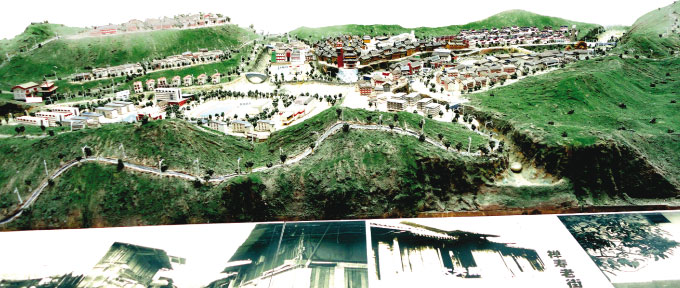 Shuimo, China: Clean and neat cobbled streets, well-manicured
gardens, shopkeepers trying to attract customers to their well-stocked
stores, a myriad of restaurants with heavenly smells of food wafting in
the air... a typical village, one might guess. Shuimo, China: Clean and neat cobbled streets, well-manicured
gardens, shopkeepers trying to attract customers to their well-stocked
stores, a myriad of restaurants with heavenly smells of food wafting in
the air... a typical village, one might guess.
But then, this is not just another village. It is a village that has
revived itself and whose residents have rejuvenated their lives, after a
devastating earthquake just two years ago.
I was visiting this village as part of a tour organised by China’s
Xinhua News Agency under the aegis of the World Media Summit.
Seeing the beautiful village of Shuimo and walking down its busy
streets, it was difficult for me to imagine that this village was
reduced to rubble as recently as two years ago.
However, this is exactly what happened on May 12, 2008 during the
famous Sichuan earthquake. Shuimo was completely destroyed during this
natural disaster which struck China’s Sichuan Province. Although the
number of lives lost in this village was only 250, almost every single
house in the village as well the villagers’ livelihoods were completely
destroyed. It is located just 10km away from the earthquake epicentre of
Yingxiu.
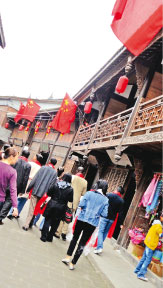 |
|
The busy but tidy streets of the
village |
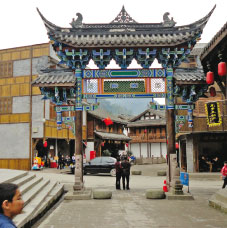 |
|
A traditional archway |
Shuimo, which is 3,000 sq.km in land mass, is located in the Wenchuan
county in the Sichuan Province, in the south west of China. It’s about
76km away from Chengdu, the main city of this province, and is spread
along the picturesque Mt. Qingcheng.
The rehabilitation and reconstruction work, which commenced in August
2008, is now complete and the town provides better housing and all other
facilities than it did during the pre-earthquake era. The houses are
built of wood according to an environment-friendly design and have been
reconstructed with the help of many parties including the security
forces. The city of Foshan, which had provided a rescue team during the
early stages, was one of the main participants in the reconstruction
drive.
The total cost of construction was around 1.8 billion yuan with
financial support coming from many sources including government parties.
Earlier the village was heavily polluted due to massive
industrialisation; over 60 factories emitting dust and dirt had operated
in the village. Now the air is clean and fresh and easy to breathe.
The villagers are now mainly dependent on tourism-oriented businesses
whereas a lot of industrial ventures providing job opportunities had
existed in Shuimo before the earthquake. After the disaster, about 60 of
those ventures shifted elsewhere, our guide explained.
The beautiful village has a lake, Shouxi, which divides the village
into two - north and south. The lake itself is quite an attraction as it
comprises inner and outer lakes; one remains calm while the other flows
on. There is almost an invisible line demarcating the two areas, though
how this has happened is not very clear.
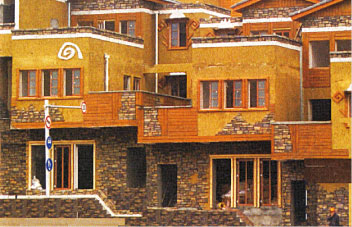 |
|
Residential buildings |
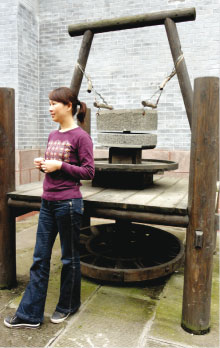 |
|
The water mill |
Shuimo is divided into four regions - one devoted to tourism, one for
residential purposes, one for education while the other region is
multi-functional. It is rich in water resources and relies on hydropower
for most of its energy. A mill which is powered by water and which is
used to grind food was another feature in the village.
After the earthquake, despite the number of deaths being less than in
some other areas of the Wenchuan county, some residents who preferred to
move out were relocated. Now Shuimo is home to about 10,000 permanent
residents. Most of them serve as shopkeepers, hotel managers and
restaurateurs and manage their businesses after receiving training from
experts. They now run small hotels and restaurants or sell handicraft.
The economic recovery in the area is complete and astounding.
When we visited, a lot of residents as well as tourists mostly from
other parts of China had gathered around a Buddhist pavilion which
seemed to be a prominent landmark in the area. The structure made in the
centre of the pavilion was 6.8 metres high and comprised a moon and star
on top. The structure was in white, symbolising purity, and encloserd a
golden Buddha statue. The pavilion denotes harmony among the many ethnic
communities, as our guide explained.
Shuimo’s architectural features give prominence to the Qiang and
Tibetan ethnic minorities. They have been elegantly combined with
elements of the Hun dynasty with the intention of attracting local
tourists. The yellow and red buildings are examples of these ethnic
styles and enhance the scenery among other white-walled and black-tiled
buildings. The town’s history has been taken into account during the
reconstruction process and is apparent along with the balance of
ecological elements.
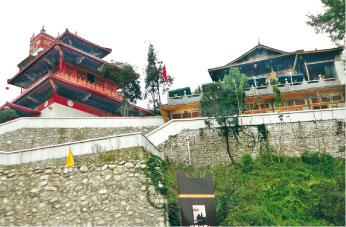 |
|
The Spring Pavilion |
Wenchuan is one of four counties where the ethnic minority Qiang is
prevalent, thus the prominence given to that ethnicity. The Spring
Breeze Pavilion stands foremost as a reminder of the days gone by. This,
along with Harmony Plaza and Changshou Old Street are important aspects
of the village. Shuimo has risen from the rubble like a phoenix from the
ashes. It bears no signs whatsoever of the massive devastation which it
experienced two years ago. In fact, it is actually more developed and
prosperous than the village which had stood there before the disaster
and is now projecting itself as a cultural and tourism centre which is
also livable.
It was due to these reasons that the village was recognised by the
Global Forum on Human Settlements as the World’s Best Example of
Post-Disaster Reconstruction for 2010.
Today, Shuimo stands tall and proud as an example of the human will
to rise above all barriers, natural or man-made. It shows the whole
world that nothing is impossible if only one focuses the mind on
achieving one’s goal.
|

